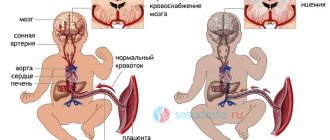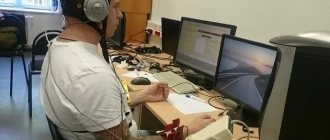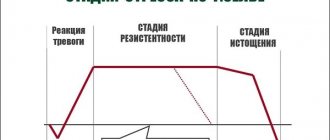Stress tolerance is a system of personal qualities that help a person to endure the effects of stressors with calm, without harmful consequences for the individual, his body, personality, and environment. The concept of stress was introduced by G. Selye, and he designated it as a state of internal tension, which is caused by the activity of the individual in difficult conditions. Depending on the degree of severity, stress can affect an individual’s activities either positively or negatively.
What is stress tolerance? This is the ability to withstand psychological stress and not submit to negative feelings that would affect others. Psychological stress resistance refers to the ability to restrain a negative reaction to stress and calmly endure stressful loads. In a stress-resistant individual, stress ends naturally, through the restoration of the body's resources.
The body of a stress-resistant individual reacts to psychological problems with psychosomatics, and often people misinterpret diseases of the body, considering them organic. If a person is ill for a long time and is terminally ill, it is worth using psychological intervention.
A high-level stress resistance of an organism provides an individual with the ability to maintain a state of inner peace in a critical situation, helps maintain optimism, joy, promotes making correct, adequate decisions and effective behavior, preventing the violation of personal boundaries and maintaining personal psychological emotional integrity.
A low level of stress resistance in an organism makes a person vulnerable, leading to a breakdown of personal boundaries, destruction of the psycho-emotional state and various diseases. An individual with weak resistance to stress cannot fully control himself, he weakens energetically, and his behavior is ineffective. The formation of stress resistance can occur regardless of current age, so everyone should focus their efforts on developing stress resistance.
What is stress tolerance
The ability to cope effectively with difficulties is what stress resistance means. This personality trait may apply to you if:
- a little trouble will not ruin your mood for the whole day;
- even when you get into a big mess, you remain calm;
- you effectively fight apathy;
- in a stressful situation you do not lose your head.
Stress management is extremely important in these difficult times. The world around us has turned into one big stress factor. If you do not know how to resist it, there is a high risk of developing apathy, depression and other disturbing consequences.
Personality resistance to stress
To define this concept, you must first understand what stress is. The body's resistance to stress determines a person's ability to withstand stressful situations without bad consequences for his activities and those around him. It is often determined whether a person is stress-resistant, taking into account external indicators. Thus, they believe that if he demonstrates all his experiences by splashing out negative emotions on others, it means that he is not stress-resistant and succumbs to stress. If a person is restrained, calm, cheerful, then he is stress-resistant.
Such a classification of stress resistance by observation is very erroneous. The fact that an individual, at the moment of exposure to a stress factor, does not express his negativity to others does not indicate that internally he does not experience depression or a feeling of oppression at all. This communicates the ability to be tactful while also playing a role well. However, this person harms his own psyche, because he locks in stress, does not allow outlets and risks being exposed to internal destructive factors. Emotions must find a way out, but only in the right way.
According to modern research, psychological stress resistance is a human characteristic that consists of several components:
- psychophysiological (characteristics of the nervous system),
- volitional (conscious self-regulation of actions regarding the situation),
— motivational (the strength of motives determines emotional stability),
— emotional (personal experience accumulated from experienced negative influences of situations),
— intellectual (analysis of the situation and adoption of the correct course of action).
Psychological stress resistance is determined by the subjective characteristics and motivational system of the individual. People exhibit different reactions to critical situations: anxiety, fear, agitation or stupor. However, there are people who are resilient and able to control their emotions. Such individuals can mobilize internal reserves and overcome the situation, without negative consequences for them, but there are very few of these people.
There are about 30% of people in the world who are stress-resistant. If not everyone has stress resistance, then people in professions such as firefighters, police officers or the military should work to increase stress resistance; their lives and the lives of others directly depend on it.
The development of stress resistance should be carried out by every person in order to make the body resilient and not allow external negative factors to weaken it.
Increasing stress resistance helps a person:
- at work, perform assigned tasks under stressful conditions; with external distractions (poor lighting, noise, cold); under psychological pressure from surrounding people (threats from superiors, distraction by colleagues, supervisory control);
- stand out among others as a balanced and thoughtful person;
- do not respond to criticism, insults, provocations or gossip of others;
— it’s easy to find a way out in an acute situation.
How to develop stress resistance
Fortunately for most, stress tolerance is a learned skill. We are genetically programmed: some people are more sensitive to stress than others. But if you make an effort, developing stress resistance is not difficult.
How to become a stress-resistant person
Character correction is not a one-time process. To do this, you need to develop patterns of behavior that are different from those that guided you in the past. Then turn them into a habit. A five-step program will help with this.
Step 1: Change your attitude
Psychologists say that any problem is divided exactly in two. 50% is beyond our control, and the rest is controllable. We need to learn to divide any circumstances into those that we can change and those that are beyond our control. Instead of complaining about the injustice of fate, you should throw all your strength into changing what you are able to fight.
Step 2: Increase your self-esteem
The second step towards developing stress resistance is a stable opinion of yourself. People with low self-esteem experience any stress more acutely and put all problems on their shoulders. With an adequate assessment of your capabilities, it will become easier for you not only to withstand stress, but also to prevent it.
Step 3: Learn to let go of negativity
The less anxiety gnaws at you, the less acutely you react to what is happening. You need to learn to throw off the burden of “bad” emotions and unspoken grievances. This will help:
- cleaning the house;
- keeping a diary;
- active sports;
Psychotechniques for stress management can also effectively cope with this.
Step 4: Release the Power of Fear
Fear of leaving a tyrant husband, fear of finding a new job, fear of making a mistake and many others stop our lives. It turns out that your life is controlled not by you, but by your fears.
Step 5: Override Negative Experiences with Positive Emotions
The secret of how to be stress-resistant is simple: every resilient person has more positive emotions in life than negative ones. They have goals and an incentive to return home after work. They know how to enjoy little things, and laughter and a good mood save them from a mountain of worries.
Formation of stress resistance of junior schoolchildren through martial arts
The article reveals new approaches to the formation of stress resistance in junior schoolchildren through martial arts. The research of such scientists as A. Adler, V. A. Bodrov, L. V. Kulikov, R. Lazarus, A. A. Rean, G. Selye, K. Horney, Erickson, etc. is considered. Schoolchildren are tested for their level of stress resistance and a program is proposed for its formation.
Key words: sports activity, stress resistance, school anxiety, primary school age, methodology.
The relevance of the problem of developing stress resistance in junior schoolchildren and ways to prevent excessive stress in sports activities does not lose its ambiguity for many reasons, for example, due to the age-related problems of adolescents, the lack of proper effectiveness of the system of psychological assistance and support for adolescents with a low level of stress resistance in sports activities. Due to the specific nature of sports activities, which place high demands on the mental stability of athletes, a systematic approach to the study of adaptation resources is necessary. Stress resistance is an important guarantor of high performance in sports activities of both young and more experienced athletes, due to the influence of external and internal stress factors. All this is done by studying the concept of stress resistance, the mechanisms of its formation, development, features of manifestation, the influence of individual personality traits on the sports process, and subsequently justifying the ways and methods of its assessment, formation and maintenance.
We propose to study the process of developing stress resistance in junior schoolchildren through martial arts.
The object of the study is the stress resistance of young schoolchildren, and the subject is the formation of stress resistance in adolescents involved in combat sports.
Let's assume that martial arts classes can increase the level of stress resistance in children of primary school age.
The following methods were used in our work:
- Projective technique for diagnosing school anxiety (A. M. Prikhozhan).
- Anxiety test R. Thammle, M. Dorki, V. Amen.
- Graphic technique “Cactus”.
- Methodology “Self-assessment of emotional states” (authors A. Wessman and D. Ricks).
The reliability of the results obtained is ensured by the use of complementary research methods, the sufficiency of statistical data and the verification of the significance of the obtained estimates using statistical criteria.
One of the main functions of the psyche is to balance the body with constantly changing environmental conditions. If for some reason this becomes impossible, then difficult conditions arise, which are characterized by an excess of emotional stress. Such conditions are often called stress. In 1936, G. Selye used this concept to designate certain physiological processes in the human body.
Research by G. Selye and his school has shown that all processes in the body are interconnected and, regardless of which of them is subject to a predominant load, adaptation to it is carried out by common integrative systems. He introduces the concept of “adaptation syndrome”, in which he distinguishes three phases [9]:
- anxiety, during which the body's resistance first decreases, and then the mobilization of defensive reactions occurs. Its duration ranges from several hours to two days;
- resistance, during which maximum adaptation is achieved. This phase is characterized by increased resistance to various harmful effects: pain, intoxication, etc.
- exhaustion, in which the failure of protective mechanisms is revealed and an increasing violation of the coordination of life functions occurs, psychosomatic diseases arise, and self-confidence is lost.
R. Lazarus was one of the first to apply a systematic approach to the study of stress, highlighting the physiological, psychological and behavioral levels in its manifestations [7].
“The psychological view of stress attaches importance to cognitive assessments of the situation, which are often accompanied by negative emotions such as anger or anxiety,” writes L. V. Kulikov. Negative emotions and even despair have a powerful energy resource. They can encourage you to make the necessary decision. However, the activity of a teenager often manifests itself as violations of discipline, causing an aggressive reaction from the teacher [5].
There are two directions for identifying the causes of stress. According to one of them, objectivist, stress arises under the influence of an external situation. However, external stressful conditions are only potentially stressful, i.e. in this case the specificity of the individual’s interaction with the environment is not taken into account. The second believes that in order to concretize the concept of “stress” it is necessary to take into account not only visible stress stimuli and reactions, but also psychological processes determined by the internal structure of the personality, its role in the desire to cope with danger.
Existing views on the essence of psychological stress are reflected by the classification proposed by V. A. Bodrov. It includes the following types [1]:
- intrapersonal (unfulfilled aspirations, needs, aimlessness of existence);
- interpersonal (inconsistency with social role);
- family (violation of relationships in the family, which can determine the behavior, activity and state of a teenager at school);
- professional, generated by the characteristics of the activity.
Psychological stress is based on a cognitive assessment of the threat of adverse effects and available opportunities to overcome stress, determined by personal characteristics [6].
According to AA Rean, there are two types of adaptation process, the criterion of which is the direction of the activity vector “outward” or “inward”. In the first type of adaptation process, the individual actively influences the environment and adapts it to himself. In the second type, the personality actively changes itself by correcting attitudes and habitual behavioral stereotypes [7].
There are different points of view on the emergence of psychological defenses. One of them, represented by scientists such as K. Horney, A. Adler, Erickson, believes that psychological defense mechanisms develop as ways of an individual’s compromise coexistence with external social reality and contribute to effective adaptation, protecting the body from destruction. But there is an opposite point of view [10].
Considering the problem of stress and ways to overcome it, we come close to the problem of development and formation of stress resistance as a necessary characteristic of the holistic process of adaptation of a teenager to the changing conditions of sports activity.
The problem of stress resistance is most developed in the psychology of sports and work, but there is no single view on its nature.
M. Shepel identifies the stress quality of a person, meaning training, suggestibility, the ability to switch and manage one’s emotions. Some scientists, when defining stress resistance, attribute it to a purely emotional phenomenon.
From this point of view, stress resistance was considered by K.K. Platonov and V.L. Marishchuk, who believed that stress resistance is the ability to manage one’s emotions, maintaining high performance, and perform dangerous activities without stress [8].
We will understand stress resistance of a teenager as a generalized personality property that characterizes his ability to withstand the stress factors of sports activities, ensuring its high efficiency and healthy emotional tone of the student during school time [4].
Based on the analysis, we identify the following components of mental activity: motivational, reflective, emotional-volitional and communicative, the harmonious interaction of which ensures high efficiency of sports activities and a healthy emotional tone of a teenager. We can consider the characteristics of these components as components of its stress resistance.
Thus, whether the training conditions will contribute to the formation of a healthy personality who can overcome stress, or whether they will become a stress factor, depends on the level of psychological culture and the competence of the coaching staff.
Teenagers with a weak type of nervous system tend to be more fatigued, lack self-confidence, excessive reflection, focus on their shortcomings, difficulty communicating, predominantly depressed mood, and frequent manifestations of anxiety. All these indicators indicate low stress resistance as a natural characteristic. At the same time, “weakness” also has advantages: greater sensitivity, uncertainty and anxiety can be stimulants of activity. The results of studies by A. E. Olshannikova and I. V. Patsyavichyus showed that people with a weak type of nervous system have advantages in self-regulation of behavior, as well as in certain types of communication (with friends and loved ones) [9].
In this work, we will conditionally distinguish two levels of stress resistance - high and low, and we will assume that high stress resistance ensures the adaptation of a teenager, which contributes to his personal growth and physical self-improvement, success in learning, and favorable emotional tone.
The leading role in the process of developing stress resistance in sports activities belongs to the coach. It depends on his psychological culture and pedagogical competence whether the learning conditions will contribute to the formation of a healthy personality who can overcome stress, or whether they will become a stress factor that exceeds the student’s adaptive capabilities.
The main research methods were: testing, conversation, observation, diagnostics, statistical methods of data processing, interpretive methods, bibliographic method.
We used the following methods:
- Projective technique for diagnosing school anxiety (A. M. Prikhozhan) [2].
The purpose of the method is to diagnose school anxiety in students aged 6–11 years.
The technique includes 2 sets of 12 drawings, each measuring 18 x 13 cm. Set A is intended for girls, and set B is intended for boys. The numbers of the pictures were placed on the back of the picture.
The general level of anxiety was calculated by the number of “dysfunctional” responses from the subjects, which characterize the child’s mood in the picture as boring, angry, sad, sad. A high level of anxiety was determined in children who gave 7 or more similar answers out of 10.
- Anxiety test by R. Thammle, M. Dorki, V. Amen [2].
The purpose of the technique is to diagnose the level of situational anxiety.
The drawing technique allows you to assess high, medium and low levels of anxiety.
- Graphic technique “Cactus” [1].
The purpose of the technique is to diagnose the state of the emotional sphere of younger schoolchildren.
A drawing of a cactus allows you to identify the presence of such feelings in a child as aggression, impulsiveness, egocentrism, self-doubt, dependence, demonstrativeness, openness, secrecy, caution, optimism, anxiety.
- Methodology “Self-assessment of emotional states” (authors A. Wessman and D. Ricks) [1].
The purpose of the technique is to study a person’s self-assessment of well-being and emotional state.
The technique allows you to diagnose a child’s well-being on four scales:
Scale 1. “Calmness - anxiety.”
Scale 2. “Energy-fatigue.”
Scale 3. “Elation—depression.”
Scale 4. “Feeling of self-confidence - feeling of helplessness.”
During training with children, special means of developing stress resistance were used, and a training program was drawn up.
The goal of the program is to develop stress resistance in children of primary school age through combat sports.
Program objectives:
- Increase children's confidence and self-esteem.
- To increase children's knowledge about stress and its impact on humans.
- Teach children to monitor signs of stress and its effects on a person.
- Teach schoolchildren to control their behavior in situations of stress.
- Promote the development of skills to reduce emotional and muscle tension.
- Develop the ability to express feelings and emotions.
- Develop effective communication skills.
- Develop a sense of understanding and trust in other people.
A total of 10 correctional sessions of 35–40 minutes each were conducted.
Forms of work: mini-lectures, game exercises, art techniques, etc.
The program of classes for children included several thematic blocks:
Block 1. “Stress in our lives.”
Block 2. “Stress in athletes.”
Block 3. “Psychological stress. Personality and stress."
Block 4. “Methods and techniques of self-regulation.”
The classes were organized in such a way that one type of activity was replaced by another, which made it possible to make the class more intense and dynamic, and less tiring.
Let's consider the test results at the ascertaining and control stages.
Results of diagnosing school anxiety (A. M. Prikhozhan)
| First group (children - athletes) | Second group | ||||||||||
| High | Average | Short | High | Average | Short | ||||||
| Ascertaining experiment | |||||||||||
| Class member | % | Class member | % | Class member | % | Class member | % | Class member | % | Class member | % |
| 9 | 45 | 9 | 45 | 2 | 10 | 11 | 55 | 6 | 30 | 3 | 15 |
| Control experiment | |||||||||||
| Class member | % | Class member | % | Class member | % | Class member | % | Class member | % | Class member | % |
| 4 | 20 | 8 | 40 | 8 | 40 | 10 | 50 | 6 | 30 | 4 | 20 |
Results of testing using the “Anxiety Test” method by R. Thammle, M. Dorki, V. Amen
| First group (children - athletes) | Second group | ||||||||||
| High | Average | Short | High | Average | Short | ||||||
| Ascertaining experiment | |||||||||||
| Class member | % | Class member | % | Class member | % | Class member | % | Class member | % | Class member | % |
| 8 | 40 | 11 | 55 | 1 | 5 | 7 | 35 | 10 | 50 | 3 | 15 |
| Control experiment | |||||||||||
| Class member | % | Class member | % | Class member | % | Class member | % | Class member | % | Class member | % |
| 3 | 15 | 8 | 40 | 9 | 45 | 8 | 40 | 9 | 45 | 3 | 15 |
Test results using the “Cactus” method
| First group (children - athletes) | Second group | ||||||||||
| High | Average | Short | High | Average | Short | ||||||
| Ascertaining experiment | |||||||||||
| Class member | % | Class member | % | Class member | % | Class member | % | Class member | % | Class member | % |
| 8 | 40 | 8 | 40 | 4 | 20 | 11 | 55 | 5 | 25 | 4 | 20 |
| Control experiment | |||||||||||
| Class member | % | Class member | % | Class member | % | Class member | % | Class member | % | Class member | % |
| 4 | 20 | 9 | 45 | 7 | 35 | 9 | 45 | 8 | 40 | 3 | 15 |
Diagnostic results using the Methodology “Self-Assessment of Emotional States” (authors A. Wessman and D. Ricks)
| Scales | Experiment | Assessment levels | |||||
| High | Average | Short | |||||
| Number of people | % | Number of people | % | Number of people | % | ||
| First group | |||||||
| Scale 1. “Calmness - anxiety” | Ascertaining | 4 | 20 | 7 | 35 | 9 | 45 |
| Control | 10 | 50 | 7 | 35 | 3 | 15 | |
| Scale 2. “Energy-fatigue.” | Ascertaining | 7 | 35 | 8 | 40 | 5 | 25 |
| Control | 9 | 45 | 9 | 45 | 2 | 10 | |
| Scale 3. “Elation —depression.” | Ascertaining | 7 | 35 | 10 | 50 | 3 | 15 |
| Control | 11 | 55 | 9 | 45 | — | — | |
| Scale 4. “Feeling of self-confidence - feeling of helplessness.” | Ascertaining | 6 | 30 | 8 | 40 | 6 | 30 |
| Control | 12 | 60 | 7 | 35 | 1 | 5 | |
| Integrative level of self-esteem of emotional states | Ascertaining | 7 | 35 | 8 | 40 | 5 | 25 |
| Control | 10 | 50 | 8 | 40 | 2 | 10 | |
| Second group | |||||||
| Scale 1. “Calmness - anxiety” | Ascertaining | 4 | 20 | 9 | 45 | 7 | 35 |
| Control | 5 | 25 | 7 | 35 | 8 | 40 | |
| Scale 2. “Energy-fatigue.” | Ascertaining | 6 | 30 | 8 | 40 | 6 | 30 |
| Control | 7 | 35 | 9 | 45 | 4 | 20 | |
| Scale 3. “Elation —depression.” | Ascertaining | 7 | 35 | 11 | 55 | 2 | 10 |
| Control | 8 | 40 | 10 | 50 | 2 | 10 | |
| Scale 4. “Feeling of self-confidence - feeling of helplessness.” | Ascertaining | 5 | 25 | 9 | 45 | 6 | 30 |
| Control | 6 | 30 | 10 | 50 | 4 | 20 | |
| Integrative level of self-esteem of emotional states | Ascertaining | 6 | 30 | 8 | 40 | 6 | 30 |
| Control | 6 | 30 | 9 | 45 | 5 | 25 | |
As a result of the study, it was confirmed that training in martial arts can increase the level of stress resistance in children of primary school age.
The study showed that significant differences were found between pre- and post-test scores.
Our theoretical and practical study of the topic allows us to draw the following conclusions:
– Stress resistance as a set of personality traits, characterized by a complex of emotional, intellectual, volitional and motivational personality traits that ensure the achievement of a set goal. The formation of stress resistance occurs in the process of ongoing activities.
– In any sports activity, stress factors appear, however, the construction of sports activity taking into account its inherent stress factors can significantly reduce its stressful impact. Exposure to stress, the intensity and nature of its occurrence and course significantly depend on the personal characteristics of the student.
– Stress resistance as a personal property is formed in activity. A person’s personality is a complex set of mental qualities, motives, abilities, states that determine the nature of his work. It gives direction and meaning to work activity, expresses motives and social value systems of a person.
– The leading role in the process of developing stress resistance in sports activities belongs to the coach and specially organized classes.
The analysis of the psychological literature shows that, despite the presence of studies on stress resistance of schoolchildren of early adolescence, stress factors that manifest themselves specifically in sports activities, the characteristics of stress resistance of athletes of early adolescence, the relationship between the personal characteristics of schoolchildren-athletes and their age-related characteristics with stress resistance have not been sufficiently studied .
Literature:
- Bodrov V. A. Information stress / V. A. Bodrov. - M.: PER SE, 2014. - 352 p.
- Verkhoshansky Yu. V. Programming and organization of the training process. - M.: Physical culture and sport, 2020. - 176 p.
- Vyatkin, V. A. Sport and the development of human individuality / V. A. Vyatkin // Theory and practice of physical culture. — 2013. — No. 2. — P. 1–5.
- Zheleznyak Yu. D., Petrov P. K. Fundamentals of scientific and methodological activities in physical culture and sports: Textbook. A manual for students. higher ped. textbook establishments. - M.: Publishing House, 2011. - 264 p.
- Zinovieva N. O. The effectiveness of using socio-psychological training in the educational process. / Proceedings of the Faculty of Economics, Social Sciences and Humanities of the Russian State University of Humanities. Collection of articles. St. Petersburg, 2013. pp. 113–117.
- Koblev, Y. K. Training of judoists / Y. K. Koblev, I. A. Pismensky, K. D. Chermint. - Maykop, 2020. - 440 p.
- Lazarus R. Psychological stress and coping processes / R. Lazarus. - M.: Medicine, 2020. - 466 p.
- Matveev, L.P. Planning and construction of sports training. / L. P. Matveev. - M.: Soviet Sport, 2012. - P. 322.
- Selye G. Stress without distress. M.: Progress, 2012. - 344 p.
- Freud 3. Psychology of the unconscious. - M.: Education, 2010. - 448 p.
Stress Management Techniques
The next step after increasing stress tolerance is how to manage stress. Ways to calm your nerves are divided into several groups:
- biological;
- meditative;
- relaxing.
Biological techniques for dealing with stress include normalizing biorhythms and switching to proper nutrition.
Meditation is the antonym of stress. People who practice meditation are famous for their calmness even in the most difficult life conditions. Start small, cleanse your body and spirit.
Relaxation techniques include breathing exercises and progressive muscle relaxation.
By using all three types of techniques in your daily life, you will gradually improve your ability to cope with stress.
Methods and principles for developing stress resistance in fighters
The main problem is that even at the level of basic exercises, it is impossible to completely protect a fighter from the effects of stress . And any exercises that are not supported by practical experience will be the basis.
It is simply unrealistic to simulate the entire range of combat conditions during training at a training ground. And for one single reason: it is impossible to create conditions at the test site that would be regarded by a person as threatening his life.
Even the notorious “hell weeks” for US Navy SEALs are also more of a convention. If only because they can always get out of the selection by ringing the bell. Perhaps the closest stress test to reality is, for example, the SAS exam. Their famous "Merry Dance". 64 kilometers with full equipment, in 20 hours. Naturally, the worst weather is chosen for this exam. The fighter moves, following a route along “checkpoints”. During the exam, no one is near the fighters, helping each other is prohibited, and only in recent years have they begun to use individual biometric sensors for insurance. In short, it is not surprising that they regularly have someone die during this exam.
And, by the way, against this background, our exam for a maroon beret does not look very serious. And I don’t remember anyone who died during the exam. By the way, just so you know, our exam for speckled soldiers is completely ripped off from the same exam for green berets from the Vietnam era.
That is, SAS came as close as possible to simulating truly life-threatening conditions. Well, in principle, those who use similar stress training methods follow the same principle (Indonesian kopasus , for example).
But, again, such a test poses a life-threatening situation only within the framework of personal survival. But this does not add readiness for combat contact.
That is, even if, following the example of the KMP, we start firing a machine gun over the heads of our crawling soldiers, this, of course, will also be a plus for preparation. But in this case they can only die completely by accident, falling victim to their own idiocy.
And here we come to the most important thing. full combat experience (including interaction and stress management ) only in real combat conditions. And nothing can replace this. No, of course, when computer technology advances so far that virtual reality becomes commonplace, it will be possible to understand this issue again, but this is not the case yet, which means there is no point in talking about it.
How can a fighter cope with stress on the battlefield? The good old truth “knowledge is power” applies here. The more a person knows:
- about how the body reacts to mental quirks
- what physiological mechanisms are responsible for mental reactions
- how to react to the simplest situations related to the body
- how to bring another person out of a state of stress and shock
By the way, a detailed medical course helps a lot. Not only at the first aid , but also at the basic field surgery/trauma level. The sooner a person encounters such phenomena as blood and corpses, and not in pictures or on the screen, but live, the better.
of anti-stress preparation, it is necessary to approach methods of recovery from shock in more detail The better and more thoroughly a person is guided in this by the example of another, the easier it will be for him to help himself, if no one is around.
The simplest methods I have already mentioned: slap or shake so that the vestibular apparatus is “rebooted”. By the way, about shaking - there is no need to knock the person off his feet. The main thing is for a person to stand on his feet, it will be much easier. As a last resort, then just lower it and sit down.
And there is one more important point. More precisely, even more important.
Stress in combat is still a fleeting phenomenon. If they are not killed or wounded, then the person will quickly exit the active phase. And it will continue to work. But after all this...
As you know, one of the biggest problems of a person is the presence of abstract thinking and a tendency to rational activity.
As they said in one good old movie:
Harley. You fucking think too much. (c) “Harley Davidson and the Marlboro Cowboy.”
The better a person understands the physiology of stress , the easier it will be for him to understand that all his possible “quirks” are not the fruit of his reasoning, but just a natural reaction of the body to what happened to him. Well, of course, it’s best to keep the fighter busy.
Whatever the fighter does, he just gets fucked. Ancient army wisdom
True, the distinguishing point is that dull and monotonous activity, such as digging a trench, in this case will not have any benefit. In order to “stir up” the brain and distract/switch a person, intellectual stress is necessary. No, I don’t mean that let him learn poetry by heart, but at least modified shooting exercises or solving any organizational and supply issues will help the matter much more than a buried tank. In a post-stress situation, you need to let the person think about what happened as little as possible.
That is, in short, comprehensive medical, psychological, and pharmacological training can help a person reduce the impact of stress to a minimum. If this is combined with combat shooting and tactical training in complex scenarios, the result will be even better.
Moreover, the more “conditionally hopeless” situations there are in such classes (in matters of tactics, this could be a situation of superior enemy forces and the impossibility of retreat, action in the environment), or situations requiring a moral choice (for example, first defeating the target that most threatens you, or one that threatens a hostage or another member of the group) - the more effective the process of stress resistance training .
It is also necessary to develop a certain “connection” between the fighters of the group (if we are talking about a small unit). For this purpose, during training, introductory notes on wounds are constantly given (if this can be done visually, with the same paintball ball with red paint and acoustic accompaniment of the wounded man’s screams, then that’s absolutely fine), the need for evacuation, medical assistance before the arrival of evacuation transport, as well as the formulation of tactical /shooting task in such a way that the wounded person complicates the group’s task as much as possible and makes completing the task as inconvenient/impossible as possible.
The more such “hopeless” situations there are, the more stress-resistant stress will be on him after the battle.
In short, an instructor with imagination, love for perverted jokes and rich experience comes up with a sufficient number of situations for such cases. Recall, at least, the film “Captain America”, when they threw a practice grenade onto the parade ground and looked at who behaved and how they behaved - also a good “joke”.
Also ideal, of course, is to conduct tactical and shooting exercises in different environments (forest, mountains, city, building). Of course, all this is talk about some kind of ideal complex. To be honest, this requires a separate training ground with powerful equipment that would allow the full range of training and tests to be fully implemented. But that's the whole problem. Creating a full-fledged program covering the entire field of training is not that difficult. The problem is that there will be nowhere to put it later.
No, of course, there are methods of preparation with simulations that are as close as possible to real circumstances and conditions. Suffice it to recall films about spies and the episodes of how they are prepared. This is not so untrue. Another thing is that this cannot be implemented en masse, and it is not necessary.
Definition of the concept
Not every one of us can say what stress resistance is.
Stress resistance is the body’s ability to withstand stress, remain calm and react to stimuli to a minimum.
A stress-resistant person is able to remain collected in any situation, not give in to panic, perform his duties efficiently and control what is happening. In psychology you can find different explanations of this term, but they have the same meaning.
This quality is important for every person. Some people need it more, especially people with stressful jobs. Some are smaller, but it will be useful for everyone.
This character trait can be attributed to leadership inclinations, since a leader is a person who leads the crowd, has no right to panic, he must remain calm in any situation, make quick and correct decisions.
All people are divided into 4 categories associated with this quality:
- With high stress resistance. These are people with psychological armor. Ready for any changes and surprises. But it happens that they are used to holding back their emotions, and this makes communication difficult.
- Stress trained. Such individuals are ready for change if it is gradual and in a positive direction. Their body is able to adapt to the situation, but it takes a small amount of time. Ready to go with the flow.
- Stress-inhibitory. These people are able to educate themselves and become stress-resistant, and if they are constantly exposed to any stressful situations, they will also appreciate sudden changes more than long-term ones.
- Stress-resistant. Such people are prone to depression and are quite difficult to work with. Their low resistance to stress can also affect teamwork, so bosses really value people who are able to cope with stress.
How to increase stress resistance
Why is it beneficial to develop emotional resilience abilities? Development of stress resistance is:
- harmonious life around;
- strengthening physical and mental health;
- self confidence;
- low anxiety;
- composure in critical situations;
- positive vision of the world.
Relaxation
The technique relieves muscle tension and relaxes on an emotional and physical level. The use of relaxation relieves anxiety and optimizes the functional state of the body.
Breath
There is a relationship between emotional excitement and breathing. By learning to control your breathing, you can quickly bring your body into a comfortable and resourceful state. Breathing techniques are used in yoga, psychotherapy, and meditation.
Physiotherapy
Using special techniques to stimulate orgasmic adaptation. Scientists have been studying stress and stress resistance for a long time, new technologies are being developed, and special programs are being built to increase the level of resistance of the body.
Working with a psychotherapist
How to develop stress resistance if there is no way to deal with a low level of resistance on your own? In some cases, individual work with a psychotherapist is indicated. Treatment involves restoring psychological comfort; diagnosing the condition and motivating the patient to interact are important.
Exercise stress
Physical exercise balances the processes of the nervous system and relieves tension. Stress and stress tolerance are closely related to the state of the body. The load from physical education helps to gain moral satisfaction; the tension will go away from doing the exercises. Various types of dancing, yoga, or even just a walk in the park are suitable for relieving stress.
Phytoergonomics
A new direction in medicine and biology helps reduce anxiety, normalize sleep, and fight vitamin deficiency. Biologically active substances of plants have a tonic effect and help relax the body. Using herbs in a bath, massage with aromatic oils, or drinking a spiced drink are all examples of techniques for increasing stress resistance through herbal medicine.
Communication exercises
The cause of conflicts in most cases is the inability to control one’s communication and behavior style. Stress occurs as a result of communication problems. Sociability and a positive attitude are an important factor in strengthening emotional stability. Communicative exercises to increase resilience in conflict situations are useful for developing stress resistance in students, in teams, and in families. Stress resistance and communication skills are taught in trainings. Psychologists develop the ability to listen to interlocutors, empathy, and flexibility in communication.
Video
We offer you to watch an excellent video lecture on how to build and strengthen stress resistance:








